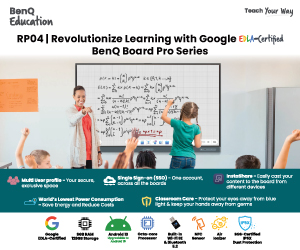Developing conversational English fluency
(Raymond Ravaglia and Sheila K. Bauer are co-founders of AccessUSA)
The gap between formal knowledge and everyday communication is wide. As students progress, classroom learning increasingly depends on spoken English

Ray Ravaglia

Sheila Bauer
It is a problem one often encounters on US college campuses. A promising international student arrives on campus equipped to read dense textbooks and write decent essays, but unable to interact with fellow students. When a classmate asks, “What did you think of the lab?” they struggle to reply.
This gap between formal knowledge and everyday communication is wide. As students progress, classroom learning increasingly depends on spoken language, as indicated by the growing importance of Socratic seminars, group projects, science discussions, and ultimately, admission and internship interviews. Therefore, it is vital for students to start intentionally developing conversational English in middle school.
Conversational fluency is not the same as reading and writing. Decades of work in language education has highlighted the difference between everyday conversational skills and academic language found in textbooks and essays. This is often described as the difference between basic interpersonal communication skills (BICS) and cognitive academic language proficiency (CALP). Think of it as the difference between hallway talk and textbook talk. These are distinct skills that must be developed through targeted practice. It’s quite common to find students excelling in one area while lagging in the other.
Admission and employment interviews make speaking visible — and consequential. During the admissions process, universities frequently require non-native English speakers to demonstrate conversational fluency. For example, Georgia Tech explicitly invites unscripted interviews so applicants can “demonstrate English language ability and communication skills.” Software platforms like InitialView and Vericant make it easy for universities to record authentic conversations rather than collect polished essays. If students cannot navigate informal conversations, admissions officers, visa officials, and recruitment managers will be skeptical about their capabilities no matter how well their formal transcripts are written.
Starting in middle school is essential. A classic longitudinal analysis of students in California conducted by Stanford University’s Prof. Kenji Hakuta found attaining oral proficiency often requires three-five years, with four-seven years for academic English. If students wait until classes X or XI to practice conversational skills, they compress an inherently long process into too little time. Waiting also disadvantages students because as they reach the end of high school, capability to become truly fluent diminishes. Only if students begin intensive practice by class VII-VIII will they be ready for high-stakes interviews, capstone presentations, and university applications.
Speaking practice boosts overall academic attainment. Intensive practice is not just about accent neutralisation. Rather, oral language work (dialogic teaching, structured talk, vocabulary, and listening tasks) reliably improves academic outcomes. The Education Endowment Foundation’s evidence base indicates that on average oral language interventions yield about six months of additional progress per year resulting in high test scores and better academic results.
The labour market requires it. Employers consistently rank communication as an important hiring criterion. In the National Association of Colleges and Employers’ Job Outlook 2025, more than two-thirds of recruiters said they look for verbal communication skills in new graduates, alongside problem-solving and teamwork. Classroom talk is not just ‘soft’; it is crucial for opportunity.
What conversational English courses should include. When the goal is to develop interpersonal communication skills rather than cognitive academic language proficiency, the ideal course should not be a dry, formal experience, but a dynamic one that engages with popular media and other non-academic sources. Such a course should include the following elements:
- Clear, everyday outcomes. Focus on real oral communications: greetings, small talk, asking follow-ups, clarifying (“Do you mean…?”), paraphrasing (“So you’re saying…”), agreeing/disagreeing politely, and closing conversations.
- High-interest input. Short clips from movies, YouTube, sports highlights, ads, podcasts, songs — paired with quick “listen-respond” prompts. Keep it light, fast, and current.
- Daily speaking routines (8-10 min). Two-turn talks, 60-second retells, mini debates, and ‘explain it to a friend’ science chats. Students should speak every day. Results should be recorded and available for analysis and longitudinal comparison.
- Listening + turn-taking skills. Teach discourse markers (“right,” “anyway,” “that said”), repair strategies (“Sorry — could you repeat that?”), and how to hold the floor without monologuing.
- Cultural pragmatics. Openers/closers, hedging, softening disagreement, idioms, humour. Make space for “what would a native speaker say here?”
Conducted efficiently, such courses are more akin to fitness programs rather than traditional academic courses. It is not something that one completes and sets aside, but a capability to be built year after year.

















Add comment